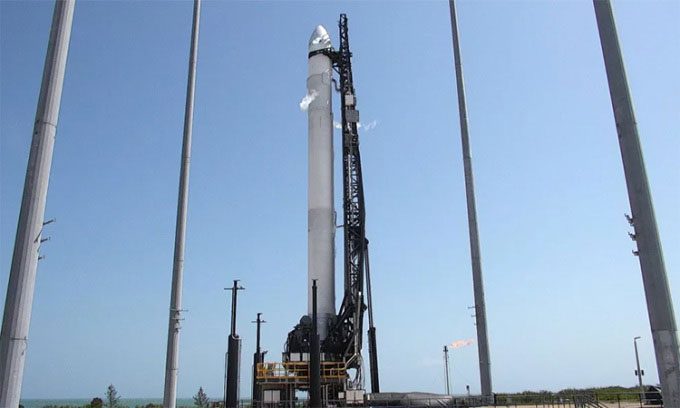Startup Relativity Space cancels the first flight of the Terran 1 rocket at the last minute due to temperature issues during the countdown.

The Terran 1 rocket from Relativity Space fueling for its first launch attempt at Cape Canaveral Space Force Station in Florida on March 9. (Photo: Relativity Space).
Terran 1, introduced by the American startup Relativity Space as the world’s first 3D-printed rocket, aborted its launch about 70 seconds before the first attempt from Cape Canaveral Space Force Station in Florida at 2:40 AM today. The company attempted to reset for a second launch attempt but ultimately had to stop due to exceeding the standard launch temperature limits for the rocket’s second stage fuel.
Relativity Space has not set a new launch date and will announce it on social media Twitter as soon as possible, a company representative stated. “We will work to prepare for the next launch window in the coming days. Due to the process of conditioning the methane/liquid natural gas fuel, it will take us a few days before we can launch again,” said Tim Ellis, CEO of Relativity Space.
The first mission of Terran 1 is named “Good Luck, Have Fun” (GLHF). This is a test mission of the 33-meter tall rocket designed to deliver small satellites into low Earth orbit. This two-stage rocket is notable for having 85% of its structure (by mass) 3D printed, including 9 Aeon-1 engines in the first stage powered by liquid methane.
Terran 1 is designed to carry a payload of 1,250 kg to low Earth orbit and 900 kg to sun-synchronous orbit at a cost of approximately $12 million per flight, according to Relativity Space. The company is also developing a larger, fully reusable rocket model named Terran R. This rocket will stand 66 meters tall with a payload capacity of 20,000 kg to orbit powered by Aeon-R engines, expected to be operational in 2024.
Ellis mentioned that he would be very pleased if Terran 1 could successfully pass through Max Q, as that would prove the feasibility of the company’s use of additive manufacturing technology for 3D-printed rockets. Max Q is the period during the rocket’s ascent when it experiences maximum dynamic pressure.
“This launch will still provide data and useful information that will help us better prepare for the next event. It is also a great foundation for developing technologies that can be directly applied to Terran R,” Ellis added.


















































